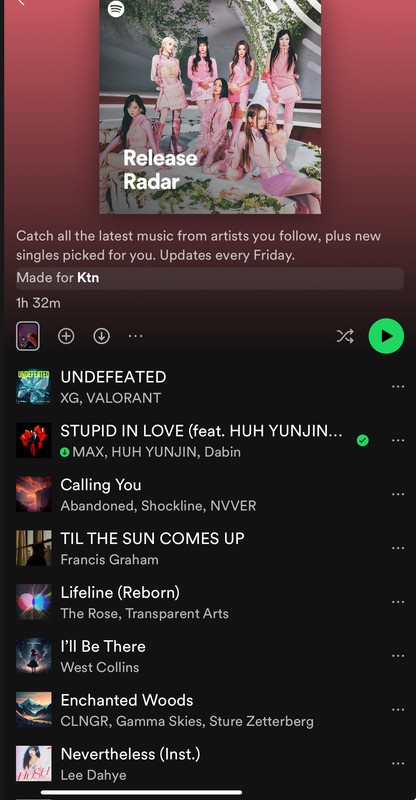There are three major types of playlists on Spotify: Spotify editorial playlists, Spotify algorithmic playlists, and listener playlists (playlists that are owned and curated by users on Spotify). It’s important to understand the differences between these three types of playlists.
1. Spotify Editorial Playlists
These are playlists that are curated by Spotify’s Shows & Editorial team. This is a team of music experts and genres specialists from around the world, hired by Spotify to curate and manage Spotify’s own playlists. These playlists tend to have large followings, and are typically the first playlists most people think of when discussing playlists on Spotify.
Many of these playlists are genre-specific – think “RapCaviar”, “Hot Country”, or “Rock This”. Others are more context-driven, such as “Songs to Sing in the Shower”, “Teen Party”, or “Relax & Unwind”.
Spotify editors often test out new tracks on smaller “feeder” playlists. Tracks that perform well on a playlist like “New Noise” (289K followers) might be promoted to “Rock This” (4.3M followers); songs that gain traction on a playlist such as “Most Necessary” (1.8M followers) might eventually end up on “Rap Caviar” (10.3M followers).
2. Spotify Algorithmic Playlists
These playlists are playlists that are automatically created for each Spotify user by Spotify’s own software algorithms. Spotify monitors each user’s music listening habits, and uses this information to produce these highly personalized playlists. Two important algorithmic playlists include “Discover Weekly” and “Release Radar”.
Discover Weekly
Discover Weekly is a weekly playlist that’s updated every Monday and unique for every Spotify user. This playlist features music that Spotify thinks that user is likely to enjoy, based on their particular Spotify listening habits. These listening habits might include:
- any artists/albums/tracks a user likes
- any artists/albums/tracks a user shares
- any tracks a user saves to their own playlists
- any tracks they skip
Release Radar
Release Radar is another weekly playlists that’s updated every Friday and unique for every Spotify user. This playlists features new music by artists that Spotify assumes the user currently enjoys, based on their Spotify activity.
3. Listener Playlists
Also called user playlists or user-generated playlists, these are playlists that are created and maintained by Spotify users themselves. Users can choose to make their playlists “secret” or “public”. While many Spotify users are simply regular users curating playlists for personal enjoyment, many businesses, companies, public personalities and more also curate their own playlists, usually as a way to extend their branding.
How each works;
Spotify editorial playlists have the obvious advantage in terms of follower numbers. Most artists are understandably keen to get a spot on these playlists, and for good reason: a placement on a major playlist like “Your Favorite Coffeehouse” or “Peaceful Piano” can mean hundreds of thousands of new listeners and streams. A word of caution, however: many of these streams tend to be “drive-by” streams. These listeners can often be more passive about their music listening habits; they’re less likely to turn into active, long-term fans.
Spotify algorithmic playlists can reach a highly targeted audience of listeners who are almost certain to love your music. This can result in a surprisingly large number of streams, particularly for talented artists in less popular genres. Spotify users who listen to playlists like Discover Weekly and Release Radar also tend to be much more engaged, actively searching for music they love. These listeners, while fewer in number, are much more likely to turn into loyal fans.
Listener playlists can sometimes attract large numbers of followers, and can produce a significant number of listeners and streams for an emerging artist. They also have the potential to influence Spotify’s algorithmic playlists: whenever a user adds your track to their playlist, it provides data to Spotify about the type of music they like. With enough data, Spotify can then recommend that track to other users who have similar listening habits, resulting in long-term audience growth.
Sometimes labels will send songs over to editors prior to the release of the songs so they can decide if they appear on those playlists on day one of their release or not.
Independent don't really have that luxury in my experience myself, not even independent artists with followings in the millions as sadly Spotify kinda teeters toward benefitting labels in general (see their current roll out for "supporting real artists first" that they have with Universal Music Group right now).


 I'd give them a couple name if it wasn't akin to providing the voodoo queen with a
I'd give them a couple name if it wasn't akin to providing the voodoo queen with a 